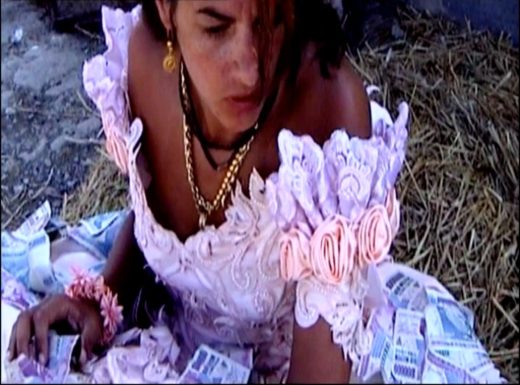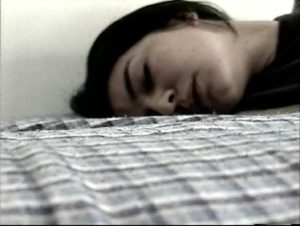Resonance/Dissonance
Evian Kuznik

Tracey Emin, Sometimes the Dress is Worth More Than the Money, 2000-01. Projection, with sound, shot on mini-DVD, 4 min. Courtesy the Patricia & Phillip Frost Art Museum FIU
The Patricia & Phillip Frost Art Museum FIU
June 18–September 18, 2016
Resonance/Dissonance, an installation at the Patricia & Phillip Frost Art Museum FIU, showcases the work of six distinctive, leading female artists who create provocative video art approaching such diverse themes as the body, gender, sexuality, violence, and popular culture. The videos, on loan from the de la Cruz Collection, are by Tracey Emin, Quisqueya Henriquez, Beatriz Monteavaro, Sarah Morris, Aïda Ruilova, and Susanne M. Winterling. FIU curator Klaudio Rodriguez and de la Cruz Collection director Ibett Yanez collaborated on the powerful installation, which groups the videos to highlight their relationships to one another. Video art inherently demands the senses to be active during observation, making the viewer’s role as a partial participant a significant part of the work.
In the exhibition’s main gallery space, the audio from each work plays from opposing corners, creating an inexorable clashing of sounds and an overwhelming sense of unease and chaos when standing at the center of the room. This jarring soundscape, emanating from the works of Emin, Henriquez, and Morris, embodies the “dissonance” of the exhibition’s title. Emin’s Sometimes the Dress is Worth More Than the Money (2000–01) investigates the misogynistic undertones related to the tradition of marriage. The Western music that makes up Emin’s soundtrack effectively clashes with the honking sounds from Henriquez’s Intertextualidad, which features a rooster walking through city streets, juxtaposing modernity and a vestige of the past, interrogating the notion of progress. Nearby, Morris’s Midtown depicts the utter isolation that can be found in the cityscape of Manhattan.
In its own devoted space, Winterling’s work is projected on a high screen. Underneath the video—which portrays a woman inharmoniously and incessantly playing a violin—is a grouping of beanbag chairs inviting the viewer to stop and fully engage with the cacophonous work. A sense of relief, or of resonance, can finally be found in the initial silence heard upon entering the exhibition’s third, smaller space where the works of Ruilova (six videos on small screens featuring unintelligible sounds) and Monteavaro (a mute narrative acted out by plastic human figures) are on view.

Aïda Ruilova, Do it, 1999. Digital color video, 31 sec. Courtesy the Patricia & Phillip Frost Art Museum FIU
Throughout the installation, the viewer gets the sensation that time is, in a way, formed and reformed over and over again. The medium of video is irrefutably effective in relaying the themes explored by these artists in a palpable and captivating manner. The artworks incite an interrogation of present societal norms, asking the viewer to rethink his or her surroundings and position in the world.










